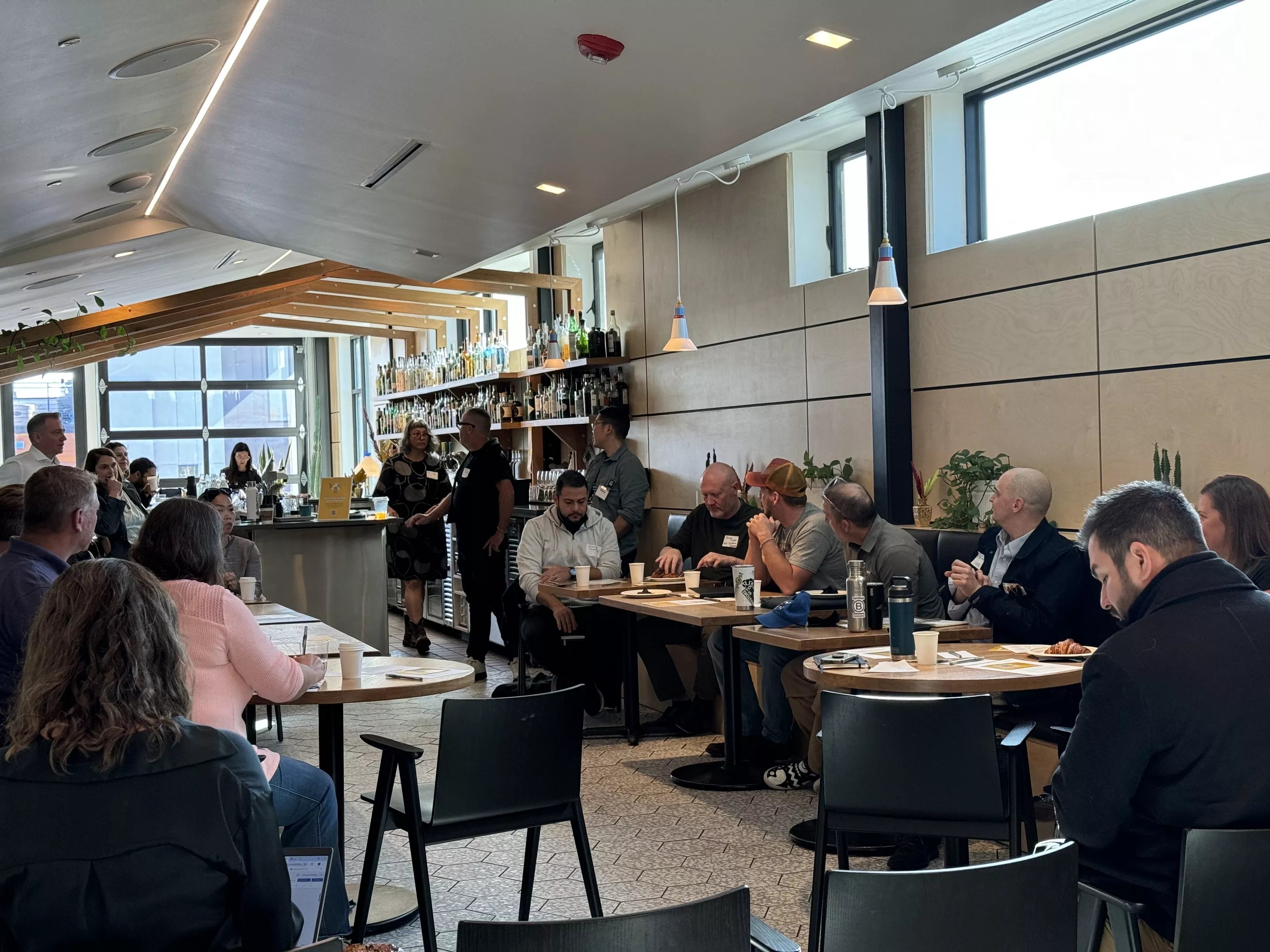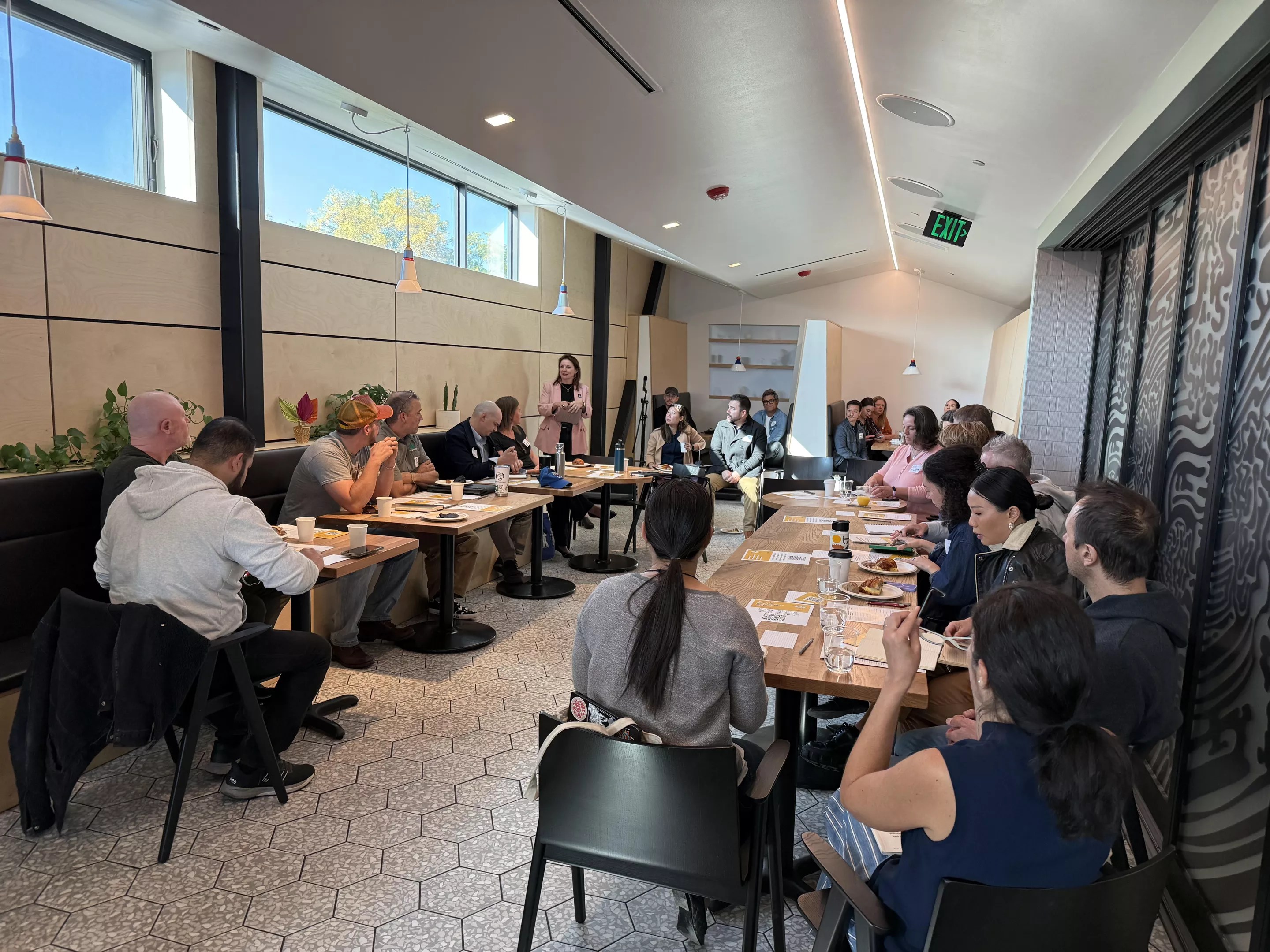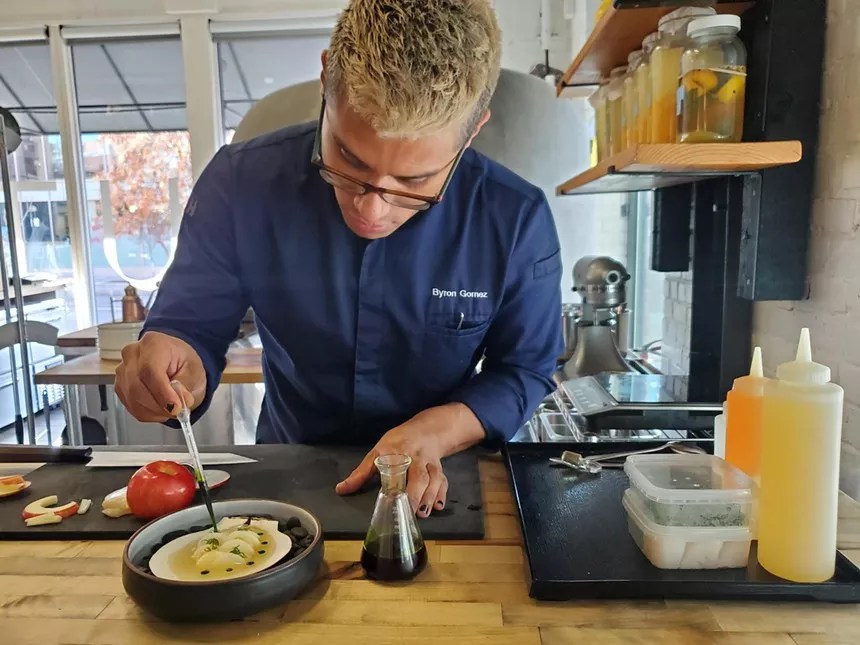
Helen Xu

Audio By Carbonatix
Being a chef or a farmer is a full-time job – if you define full-time as all the time. In addition to the responsibility of nourishing customers, employing workers and running small businesses, Colorado chefs and farmers have found themselves needing to become environmental advocates as climate change impacts the food industry.
That was the topic of discussion at an October 7 roundtable hosted by the James Beard Foundation as part of its Climate Solutions for Restaurant Survival campaign. During the event, hosted at Id Est Hospitality’s Hey Kiddo, chefs, farmers, nonprofit leaders and policymakers spent two and a half hours discussing the challenges of climate change and how it impacts the industry, as well as solutions.
Participants included Id Est Hospitality, the group from Kelly and Erika Whitaker, who were named Restaurateur of the Year winners at the 2024 James Beard Awards. Other local restaurants represented included Lucina, Olivia, Bistro Vendôme and MAKfam. Also on hand were the husband-and-wife duo behind Pfaltzgraff Farms in Haxtun; representatives from East Denver Food Hub, Zero Footprint, Kaizen Rescue, Jefferson County Food Policy Council, Food for Climate League and Alliance for Collective Action; and members of Denver City Council, including at-large representative Serena Gonzales-Gutierrez.
The James Beard Foundation hosts these roundtables all over the country. Denver’s was the fifth one this year, with future events planned for Portland, Miami and Milwaukee. “We do these regional events to hear from people on the ground. You don’t get this [insight] from Zoom,” explains Anne E. McBride, vice president of programs at the James Beard Foundation.
When news happens, Westword is there —
Your support strengthens our coverage.
We’re aiming to raise $50,000 by December 31, so we can continue covering what matters most to this community. If Westword matters to you, please take action and contribute today, so when news happens, our reporters can be there.
The catalyst for these events is the foundation’s campaign to lobby Congress to protect the $20 billion in conservation funding from the Inflation Reduction Act (IRA). Currently a topic of debate as part of the upcoming Farm Bill negotiations is whether these funds should remain allocated specifically for climate-related agricultural practices (which sequester carbon, improve soil health and enhance farm ecosystems), or if they will be diverted or reduced to address broader agricultural needs.
While the conversation started at the federal level, participants quickly turned to local challenges and solutions. “A lot of what we’re seeing in these [federal] conservation programs are not designed for Colorado. They are designed for the Midwest,” explained Pfaltzgraff Farms co-owner Roy Pfaltzgraff. “You look at what comes out of IRA programs and NRCS programs, and they are pushing methods that work great – if you’re in Iowa. They talk about cover crops; we don’t get enough moisture here for cover crops. … We need to talk about living roots.”
Pfaltzgraff went on to elaborate how the changing weather patterns in Colorado have translated into unpredictable growing seasons. “It used to be the second week of September where you were guaranteed three days of rain. Now? September has turned into August. August has mysteriously turned into April,” he said. Additionally, he noted, the weather has become more extreme, with higher highs and lower lows.

The discussion started at the federal level but quickly turned to local-level challenges.
Michael Amato
This affects ski and snowboard season. Mountain towns are becoming increasingly expensive as the winter season becomes shorter and shorter. Dory Garcia, assistant manager at Hey Kiddo, noted that one-third of the thirty interviews he conducted last week were with restaurant workers who had been priced out of the market in the mountains and are moving back to Denver from Aspen, Vail and Breckenridge.
Multiple participants despaired at the still-present gap between farmers and restaurants. “It’s crazy that we get a beverage rep in every single day at a restaurant and then someone from the farm maybe once or twice a year,” lamented Erasmo Casiano, chef and owner of Lucina and Xiquita.
“I want to buy direct from farmers, I do…but who’s going to bring it in?” asked Doris Yuen, co-owner of MAKfam, prompting Roberto Meza, board president of Young Farmers and CEO of East Denver Food Hub, to jump in.
His organization does exactly that – sourcing and delivering farm-fresh food to restaurants, schools, hospitals and other institutions. But while promoting that work, he admitted that East Denver Food Hub needs more resources, including more cold storage and trucks to keep up with demand.
Meza attributes the food hub’s success to education through storytelling. “We provide source identification, but more than that, we try to tell the story of a farmer – how they grow their corn or how they grow their potatoes – so that the consumer and the client understand,” he said.
Some of the most interesting storytelling through zero waste and sustainability has been from the Id Est chefs. As part of a boot camp for the Denver Metro Chamber of Commerce, “we made a presentation which I called the full-circle or the recycle course,” explained BrutÁ¸ executive chef Byron Gomez. “We literally took all the trimmings from different parts of the eleven courses that we presented and we made one dish at the end that’s kind of like a final bite. And that is eliminating carbon footprint, deliveries, etc.”

Byron Gomez took the helm at Brutø in February.
Molly Martin
He offered another example: bison heart. “Nobody’s serving [it], and then the farmer can make a buck out of this bison heart that he’s serving as dog food,” Gomez said. “We tried so many different cures. … After months of R&D, we had this crazy idea to shave the bison heart and put it in our tartare.”
Mara King, Id Est’s director of fermentation and sustainability, offered more zero-waste examples such as making chicken garum from chicken hearts and guts; taking leftover bread and making kvass, a low-alcoholic fizzy, fermented beverage originating from northeastern Europe; and using leftover bread to make soy sauce.
What quickly became apparent is that each of the participants has been aware of and working toward addressing climate change in various ways, but this event was a milestone in seeking collective awareness and action.
Toward the end of the roundtable, nonprofit group after nonprofit group followed by council city representatives stood up and rattled off various programs, subsidies, grants and refunds available while farmers and chefs furiously scribbled the information down and raised their hands asking for clarification and more information.
“How do we get access to this information?” Meza asked, noting that there are so many resources, organizations and opportunities he only became aware of through the roundtable. “I know every organization is at capacity, over-capacity, to get information out. So we need to use our network. … Communicate intentionally about what’s available. There’s a civic duty that has been highlighted coming out of this conversation,” he noted.
Many of the participants echoed that sentiment – that this conversation was a great first step but that there is a desire for more meetings to start putting together an action plan with tangible steps to move the solutions forward. “I love hearing all this, I love the resources that are being presented today, but I do think we need to focus in with our voices on one or two things,” whether it’s lobbying for the Farm Bill, throwing financial support behind food hubs, fundraising for local infrastructure, and/or further education and programming around regenerative agriculture and perennial grains,” concluded Kelly Whitaker.
To everyday consumers who aren’t in the industry but enjoy a good meal, Whitaker offered this advice: “Vote with your dollar. Support restaurants that support good food and that cover a broad statement of everyday purposes that happen in grocery stores, local businesses, local bakeries, local restaurants. … Go back to nourishing the home, the community. That’s really what this is about.”